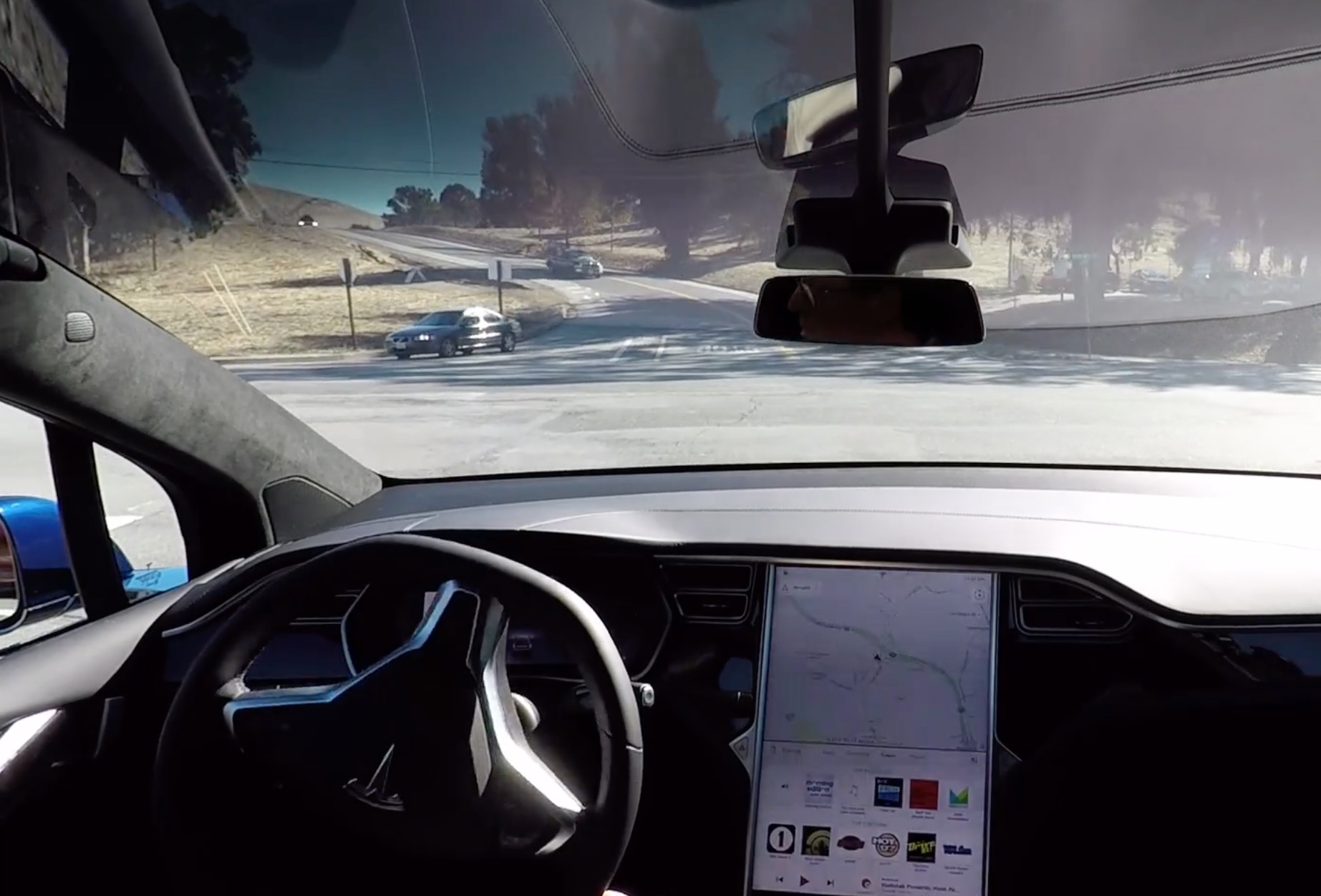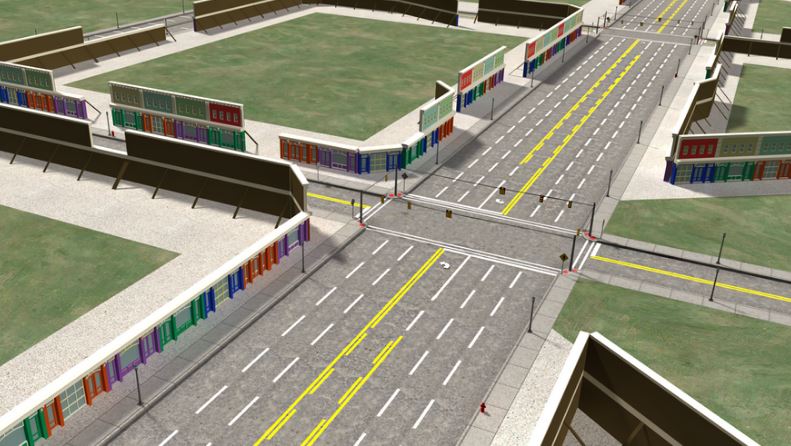News
Michigan becomes first state to approve self-driving cars for public roads

Michigan has become the first state to approve the sale of autonomous cars for use on public roads. Governor Rick Snyder signed the legislation making the sale of self-driving cars legal on December 9. The legislation is part of a package of four bills that cleared the Michigan senate last September. In addition to authorizing the sale of autonomous cars, the package includes funding for the American Center for Mobility — a research campus where autonomous driving technologies can be tested before being offered to the public.

Proposed American Center for Mobility Credit: Michigan Economic Development Corp
The new law permits the sale of vehicles similar to Google’s autonomous test car that has no steering wheel, accelerator, or brake pedal. “By establishing guidelines and standards for self driving vehicles, we’re continuing that tradition of excellence in a way that protects the public’s safety while at the same time allows the mobility industry to grow without overly burdensome regulations,” Gov. Snyder said at a bill signing ceremony. “We are still the heart and soul of the auto industry, make no mistake about that,” Snyder continued.
The driving force behind the legislative package — which was vigorously supported by Ford and General Motors — is a desire to stop the brain drain of engineers from Michigan to Silicon Valley and other West Coast technology centers like Seattle. The American Center for Mobility will be constructed at the GM’s former Willow Run powertrain factory and automotive testing area. Prior to that, Willow Run manufactured B-24 bombers during World War II and was an important part of a manufacturing structure that made America the so-called “Arsenal of Democracy.”
Willow Run already has some infrastructure that will be useful for testing autonomous cars. It has long straightaways for high speed testing. It features a three level interchange, a high speed loop, and several bridges and tunnels. In addition, it already has the infrastructure needed to test connected car systems and features mock-ups of urban, suburban, and rural environments, according to AutoBlog.
This legislation will turn “the eyes of the world once again on Michigan for its engineering and its research,” says Michigan senator Ken Horn, a co-sponsor on the legislative package. “It’s a different kind of car-building,” Horn said on the Senate floor prior to voting, “but car-building nonetheless.”
It is ironic that Michigan should be so intent on being a leader in some areas while remaining doggedly opposed to innovations in others. The determining factor seems to be what Ford and General Motors want, as they are the tail that wags the dog in Michigan. The state bitterly opposes Tesla’s direct to customer sales model, for instance.
On the one hand, the state has bought shares of Tesla Motors for its retirement fund. Tesla is also a significant presence in Michigan’s manufacturing sector after purchasing the former Michigan-based Riviera Tool Company. But despite all Tesla’s lobbying efforts, the state’s franchise dealers, with substantial support from General Motors, have managed to block any changes to state law that would permit Tesla to open showrooms in the state to sell its cars directly to the public.
The new law permitting the sale of self-driving cars highlights the current struggle between traditional car companies and technology companies. Leading up to next week’s Technology In Motion conference co-hosted by Automotive News, Mike Ableson, vice president of strategy and global portfolio planning for General Motors, said automakers need to look at “the innovations coming out of Silicon Valley from Apple and Google and Samsung and put boundaries around that, not just for the OEM but also for the consumer. How far into the car do you let them come?”
Frank Weith, director of connected services at Volkswagen Group of America, said automakers need to make sure they don’t lose their identity as new technologies play a larger and larger role in the cars of the future. “We don’t want to be just a commodity, selling bulk vehicles to Google or Apple or Uber,” Weith said. “We want to be part of the consumer experience and keep our product up there.”
Both Ableson and Weith pointedly refrain from mentioning Tesla, but the shadow of Elon Musk is clearly a background factor in their remarks.

News
Tesla FSD fleet is nearing 7 billion total miles, including 2.5 billion city miles
As can be seen on Tesla’s official FSD webpage, vehicles equipped with the system have now navigated over 6.99 billion miles.

Tesla’s Full Self-Driving (Supervised) fleet is closing in on almost 7 billion total miles driven, as per data posted by the company on its official FSD webpage.
These figures hint at the massive scale of data fueling Tesla’s rapid FSD improvements, which have been quite notable as of late.
FSD mileage milestones
As can be seen on Tesla’s official FSD webpage, vehicles equipped with the system have now navigated over 6.99 billion miles. Tesla owner and avid FSD tester Whole Mars Catalog also shared a screenshot indicating that from the nearly 7 billion miles traveled by the FSD fleet, more than 2.5 billion miles were driven inside cities.
City miles are particularly valuable for complex urban scenarios like unprotected turns, pedestrian interactions, and traffic lights. This is also the difference-maker for FSD, as only complex solutions, such as Waymo’s self-driving taxis, operate similarly on inner-city streets. And even then, incidents such as the San Francisco blackouts have proven challenging for sensor-rich vehicles like Waymos.
Tesla’s data edge
Tesla has a number of advantages in the autonomous vehicle sector, one of which is the size of its fleet and the number of vehicles training FSD on real-world roads. Tesla’s nearly 7 billion FSD miles then allow the company to roll out updates that make its vehicles behave like they are being driven by experienced drivers, even if they are operating on their own.
So notable are Tesla’s improvements to FSD that NVIDIA Director of Robotics Jim Fan, after experiencing FSD v14, noted that the system is the first AI that passes what he described as a “Physical Turing Test.”
“Despite knowing exactly how robot learning works, I still find it magical watching the steering wheel turn by itself. First it feels surreal, next it becomes routine. Then, like the smartphone, taking it away actively hurts. This is how humanity gets rewired and glued to god-like technologies,” Fan wrote in a post on X.
News
Tesla starts showing how FSD will change lives in Europe
Local officials tested the system on narrow country roads and were impressed by FSD’s smooth, human-like driving, with some calling the service a game-changer for everyday life in areas that are far from urban centers.

Tesla has launched Europe’s first public shuttle service using Full Self-Driving (Supervised) in the rural Eifelkreis Bitburg-Prüm region of Germany, demonstrating how the technology can restore independence and mobility for people who struggle with limited transport options.
Local officials tested the system on narrow country roads and were impressed by FSD’s smooth, human-like driving, with some calling the service a game-changer for everyday life in areas that are far from urban centers.
Officials see real impact on rural residents
Arzfeld Mayor Johannes Kuhl and District Administrator Andreas Kruppert personally tested the Tesla shuttle service. This allowed them to see just how well FSD navigated winding lanes and rural roads confidently. Kruppert said, “Autonomous driving sounds like science fiction to many, but we simply see here that it works totally well in rural regions too.” Kuhl, for his part, also noted that FSD “feels like a very experienced driver.”
The pilot complements the area’s “Citizen Bus” program, which provides on-demand rides for elderly residents who can no longer drive themselves. Tesla Europe shared a video of a demonstration of the service, highlighting how FSD gives people their freedom back, even in places where public transport is not as prevalent.
What the Ministry for Economic Affairs and Transport says
Rhineland-Palatinate’s Minister Daniela Schmitt supported the project, praising the collaboration that made this “first of its kind in Europe” possible. As per the ministry, the rural rollout for the service shows FSD’s potential beyond major cities, and it delivers tangible benefits like grocery runs, doctor visits, and social connections for isolated residents.
“Reliable and flexible mobility is especially vital in rural areas. With the launch of a shuttle service using self-driving vehicles (FSD supervised) by Tesla in the Eifelkreis Bitburg-Prüm, an innovative pilot project is now getting underway that complements local community bus services. It is the first project of its kind in Europe.
“The result is a real gain for rural mobility: greater accessibility, more flexibility and tangible benefits for everyday life. A strong signal for innovation, cooperation and future-oriented mobility beyond urban centers,” the ministry wrote in a LinkedIn post.
News
Tesla China quietly posts Robotaxi-related job listing
Tesla China is currently seeking a Low Voltage Electrical Engineer to work on circuit board design for the company’s autonomous vehicles.

Tesla has posted a new job listing in Shanghai explicitly tied to its Robotaxi program, fueling speculation that the company is preparing to launch its dedicated autonomous ride-hailing service in China.
As noted in the listing, Tesla China is currently seeking a Low Voltage Electrical Engineer to work on circuit board design for the company’s autonomous vehicles.
Robotaxi-specific role
The listing, which was shared on social media platform X by industry watcher @tslaming, suggested that Tesla China is looking to fill the role urgently. The job listing itself specifically mentions that the person hired for the role will be working on the Low Voltage Hardware team, which would design the circuit boards that would serve as the nervous system of the Robotaxi.
Key tasks for the role, as indicated in the job listing, include collaboration with PCB layout, firmware, mechanical, program management, and validation teams, among other responsibilities. The role is based in Shanghai.
China Robotaxi launch
China represents a massive potential market for robotaxis, with its dense urban centers and supportive policies in select cities. Tesla has limited permission to roll out FSD in the country, though despite this, its vehicles have been hailed as among the best in the market when it comes to autonomous features. So far, at least, it appears that China supports Tesla’s FSD and Robotaxi rollout.
This was hinted at in November, when Tesla brought the Cybercab to the 8th China International Import Expo (CIIE) in Shanghai, marking the first time that the autonomous two-seater was brought to the Asia-Pacific region. The vehicle, despite not having a release date in China, received a significant amount of interest among the event’s attendees.








